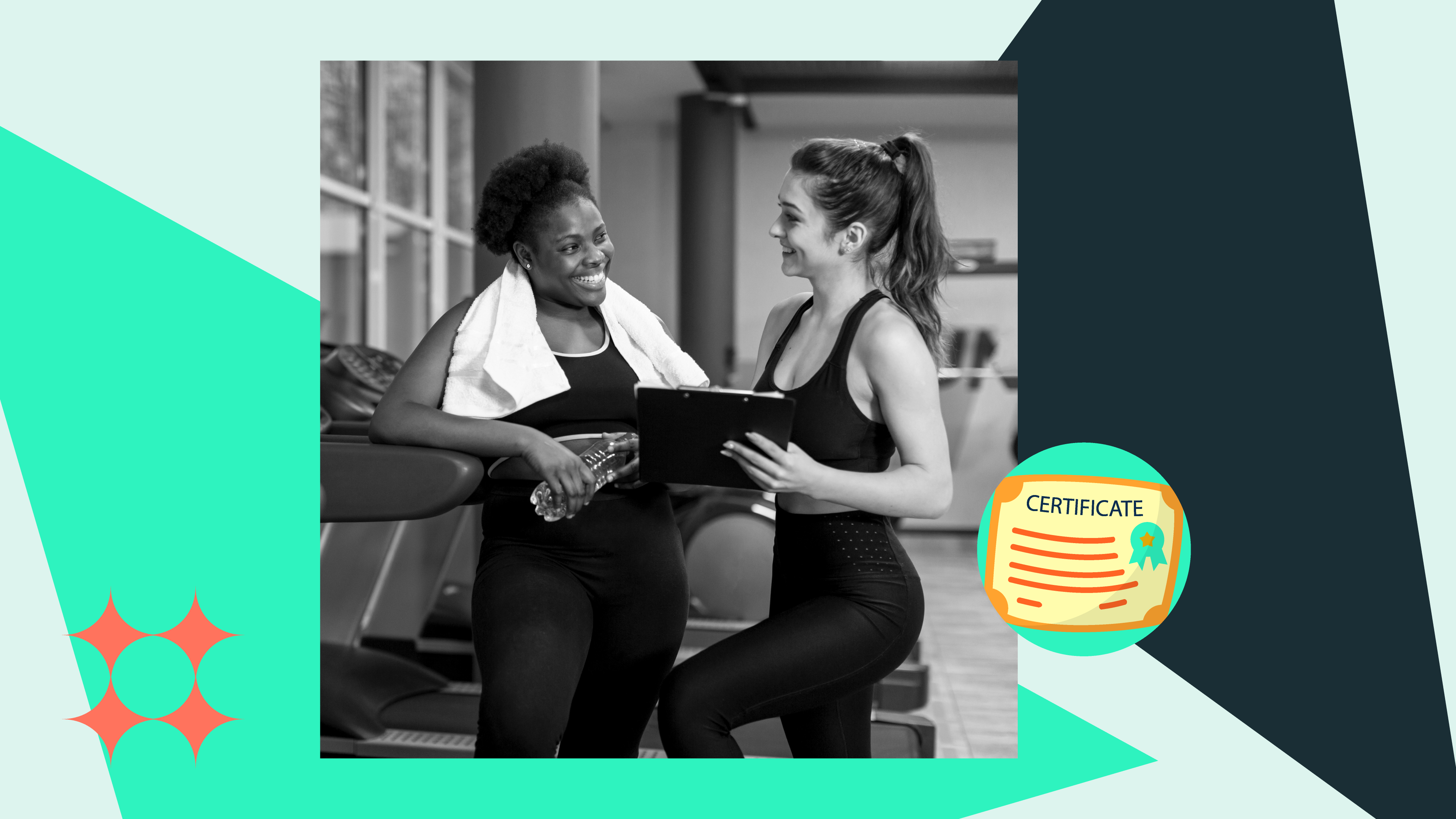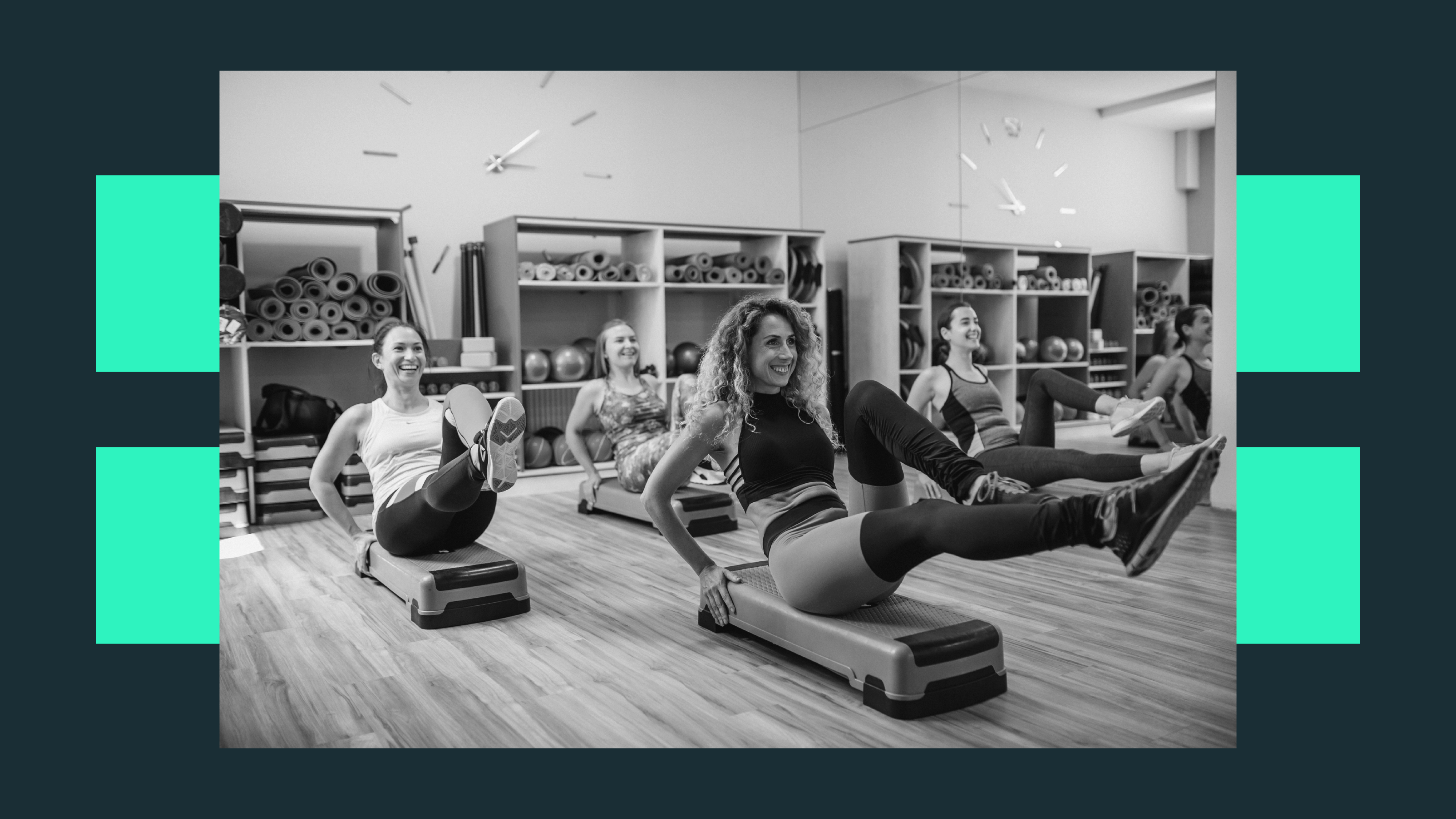Exercise Your Way To Financial Security: How To Become A Fitness Coach

While sports and exercise have never exactly been niche, in recent years fitness has reached new heights of popularity.
Fitness influencers are taking over social media, demonstrating incredible strength and stamina, and causing millions of ordinary people to embark on their own fitness journeys, in the hope that one day they’ll perform similarly superheroic feats themselves.
For anyone who already has extensive experience in fitness or sports, even if they’ve never utilised it professionally, that means there’s an opportunity to offer their expertise to those fitness hopefuls - and fitness coaching as a side hustle has hugely taken off.
But how easy is it really to launch a fitness coaching business? How do you get a certificate as a fitness coach? And how much can you earn from fitness coaching?
We’ll answer all your questions in this article, so that you’ve got all the tools and information you need to go away and start your very own fitness coaching side hustle - or, perhaps, choose an alternative business idea instead.
So without further ado, let’s get started.
Who Can Be A Fitness Coach Or Instructor?
Unlike with some side hustles, such as audio transcription or blogging, it’s simply not the case that anyone can jump into fitness coaching with no prior experience.
People will only pay for expertise - and that means that you need to have, at the very least, significant experience in what you’re coaching to justify charging people for a professional service.
That doesn’t necessarily mean you need to work as a fitness coach or instructor already, though. If you’ve spent a lot of time training yourself, you’ll have acquired many of the skills you need for coaching - all you’ll need to do is get a formal qualification.
Chiefly, you need to be pretty fit yourself. For one thing, you’ll need to be able to keep up with your clients, and for another, people tend to be reluctant to take the advice of someone who doesn’t appear to follow it themselves.
So if you can’t do ten burpees in a row without collapsing in a sweaty heap, fitness coaching probably isn’t for you. On the other hand, if you’re fit and healthy and keen to share your knowledge and experience, you’re probably the right sort of person to embark on a fitness coaching side hustle.
Do You Need Qualifications To Offer Fitness Coaching?

In most cases, yes. It isn’t technically illegal to offer fitness coaching without a qualification, but you’ll find it very difficult.
As a fitness coach or personal trainer, you’ll need insurance - and insurers generally want to know that the people they’re covering are qualified. Without either a qualification or insurance, your customers aren’t likely to feel safe in your hands.
If you’re considering fitness coaching as a side hustle, it’s possible that you’re already qualified, in which case you’re all set to go.
If not, you’ll need to acquire an appropriate certificate to demonstrate that you’ve got the skills and expertise to offer fitness coaching to the public.
There are a number of different organisations offering fitness instructor qualifications, but the basic accreditation you need is as a Level 2 Fitness Instructor, and it may well be worthwhile also completing a Level 3 Personal Trainer course.
Some people might want to offer their services exclusively on an online, remote basis. You might think it’s easier to get away without a qualification if you’re not seeing your clients in person - but you’re still much better off getting a qualification and suitable insurance.
You need to be confident that the plans and advice you’re giving are effective and safe, and a proper qualification is the best way to ensure that.
Should You Offer Fitness Coaching Online Or In Person?
It really depends on you!
Online and in person fitness coaching are extremely different ways of working, so it all depends on how you want to spend your time.
Online fitness coaching has the benefit of allowing you to offer your services to more clients at once. Having assessed their current situation and their aims, you’ll draw up training plans and offer regular updates and advice to get them closer to their goal performance and physique.
You might consider combining this with fitness-related influencing on social media, which could drive people to your business.
But if what you enjoy is getting outside and working with people, in person coaching is probably a better fit. You’ll work with clients either individually or in groups, and see their progress first hand.
Of course, there’s no reason you can’t combine the two, though that might occupy more of your time. Ultimately it all depends on what you enjoy and how you want to spend your time.
What Are The Best Types Of Fitness Coaching To Offer?

It’s natural to want to embark on a fitness coaching side hustle that’ll make you the greatest possible amount of money - but ultimately the type of fitness coaching you should offer is the type of fitness coaching you can offer.
In short, you should specialise in the type of fitness coaching you actually know how to offer. There’s no point trying to launch a bodybuilding training service if you don’t have any experience in bodybuilding yourself - so realistically your existing skills should inform the fitness coaching you offer.
That said, it may be worth adding in another angle to your coaching, if you’re willing to learn. For example, you could offer a combination of diet and exercise plans if you want to help people lose weight or gain muscle, though you may need specialist nutritionist training to safely offer diet plans.
If you’ve got any medical interests, you might consider completing courses in rehabilitation to allow you to offer training focused on overcoming minor injury - though unless you’re also a qualified physical therapist, you won’t be in a position to offer guidance for more serious issues.
And if you’ve got expertise in a particular sport or activity, it’s an obvious move to offer coaching skewed to that sport. You might offer yoga classes, football or tennis coaching, or self-defence - though again, in all these cases you may need to acquire additional certification to ensure you’re fully qualified and covered for that type of specialist coaching.
How To Get Started With A Fitness Coaching Side Hustle
1. Research. As with any side hustle, the first thing you need to do is extensive research. You should investigate the types of coaching other fitness coaches are offering, and in what format, how popular each seems to be, and also the best techniques for effective coaching to motivate your clients without pushing them too far.
You’ll also need to research the logistics of your new side hustle. Do you need any qualifications or training to carry out your new role? What kind of insurance do you need? You should have answers to all these questions before you go any further.
2. Complete any training/assessments. If you do need a qualification to offer the fitness coaching services you have in mind, you should make sure you acquire it before you go any further with your burgeoning business.
3. Decide on how to work. You’ll need to make a decision as to whether you’ll be a mobile fitness coach, coming to people’s houses or offering sessions in public spaces like the park, or whether you’ll affiliate yourself with a gym or other third party. Or will you offer all your coaching remotely, allowing you to work online? Or a mix of all three?
4. Create training/lesson plans. Naturally, each person you coach will have different needs, and for one-on-one coaching you’ll tailor each plan individually - but it’s still wise to have a number of basic plans ready to go, that can be adapted to your clients depending on their goals. If you’re going to offer group sessions, meanwhile, you should plan out your first few lessons in advance and, ideally, time them to make sure they work.
5. Set your prices. Check out the pricing offered by your rivals to establish a sensible pricing point for yourself. Personal trainers are often pretty well paid, with hourly rates that vary from £30 an hour to over £80, but those costs must take into account work the fitness coach has to do outside their official sessions - working out training plans, offering initial consultations, which are often free, and analysing results.
If you’re offering coaching from a distance, meanwhile, you’ll probably want to charge on a weekly or monthly basis, or for a certain package, as you won’t be working with your clients in person in the same way.
6. Market your side hustle. You won’t get very far unless your prospective customers know you’re there! As a fitness coach, you’re likely to do well by promoting yourself personally, as your clients will want to know they’ll enjoy working with you, and will generally aspire to end up with a body that looks like yours. So it’s a good idea to take some promotional shots and film a promotional video for social media, which should give your new business a boost.
If you’re planning to work with a local gym or any other third party business, you should also be able to advertise your services through them, and perhaps even ask them to recommend you to any of their customers in search of fitness coaching.
7. Launch your business. If all that’s gone well, you’re ready to go! Hopefully your excellent marketing tactics have earned you your first customers, and you’ll be able to get going right away.
Pros And Cons Of Fitness Coaching As A Side Hustle
| Pros | Cons |
|---|---|
| Great exercise! | Often weather dependent |
| Very rewarding | Pressure on you to remain fit (and to look fit) |
| Chance to share your knowledge and expertise | Your side hustle could be seriously derailed by injury |
| Can choose to work for yourself or with a larger company, such as a gym | If you’re not already a qualified fitness instructor, you’ll have the fairly significant expense of completing a qualification |
| You can set your own schedule around your other commitments | It may not be possible to work from home |
Alternative Side Hustles For Extra Income
If you like the sound of starting your own side hustle, but you’d prefer a somewhat less energetic business model, there are plenty of other things you could do!
You could make gardening your new side hustle, if you like being outside, or try out dog walking, for a side hustle that’ll get you moving. Or, if you’d prefer to work from home, you could take on blogging, or transcribing audio.
You could even try Matched Betting, which is hard to beat as side hustles go. Once you’ve learnt the ropes, it’s an easy way to make money online, with the potential to make £300-£1000 a month - and it can all be done from your sofa, with not a burpee in sight!
